General Sir John Monash, Personal Files Book 19, 4 June - 24 June 1918, Part 8
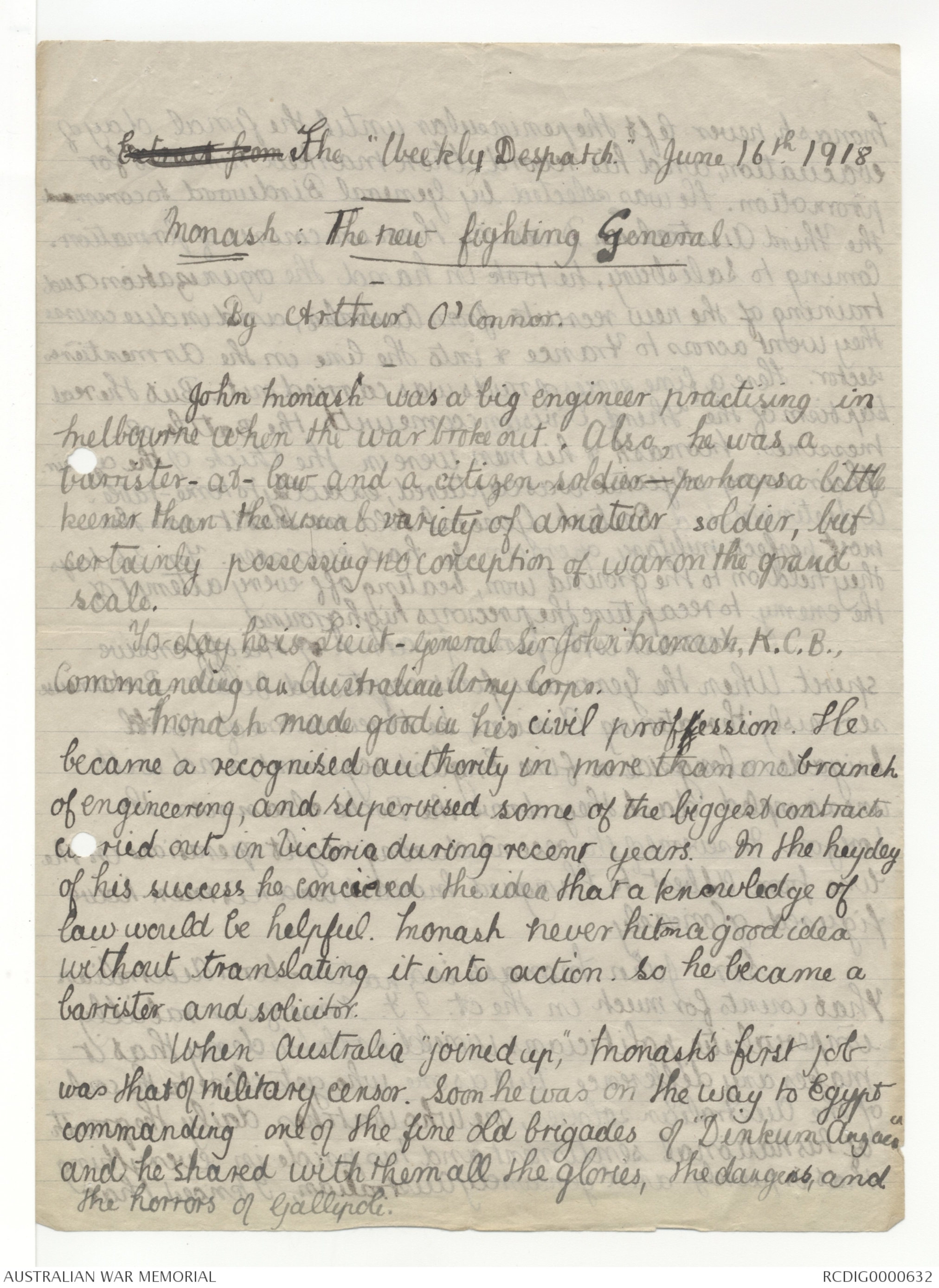

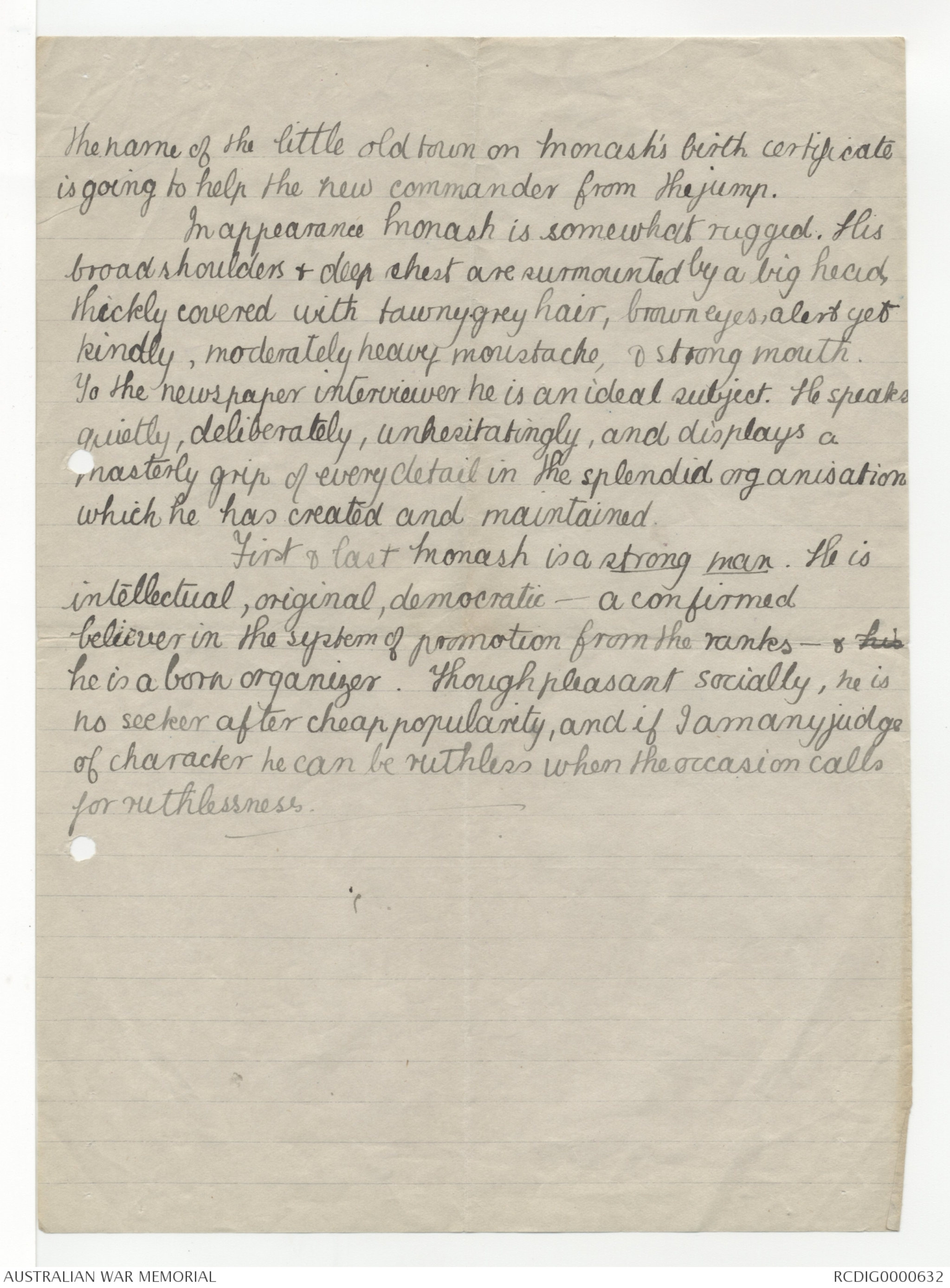
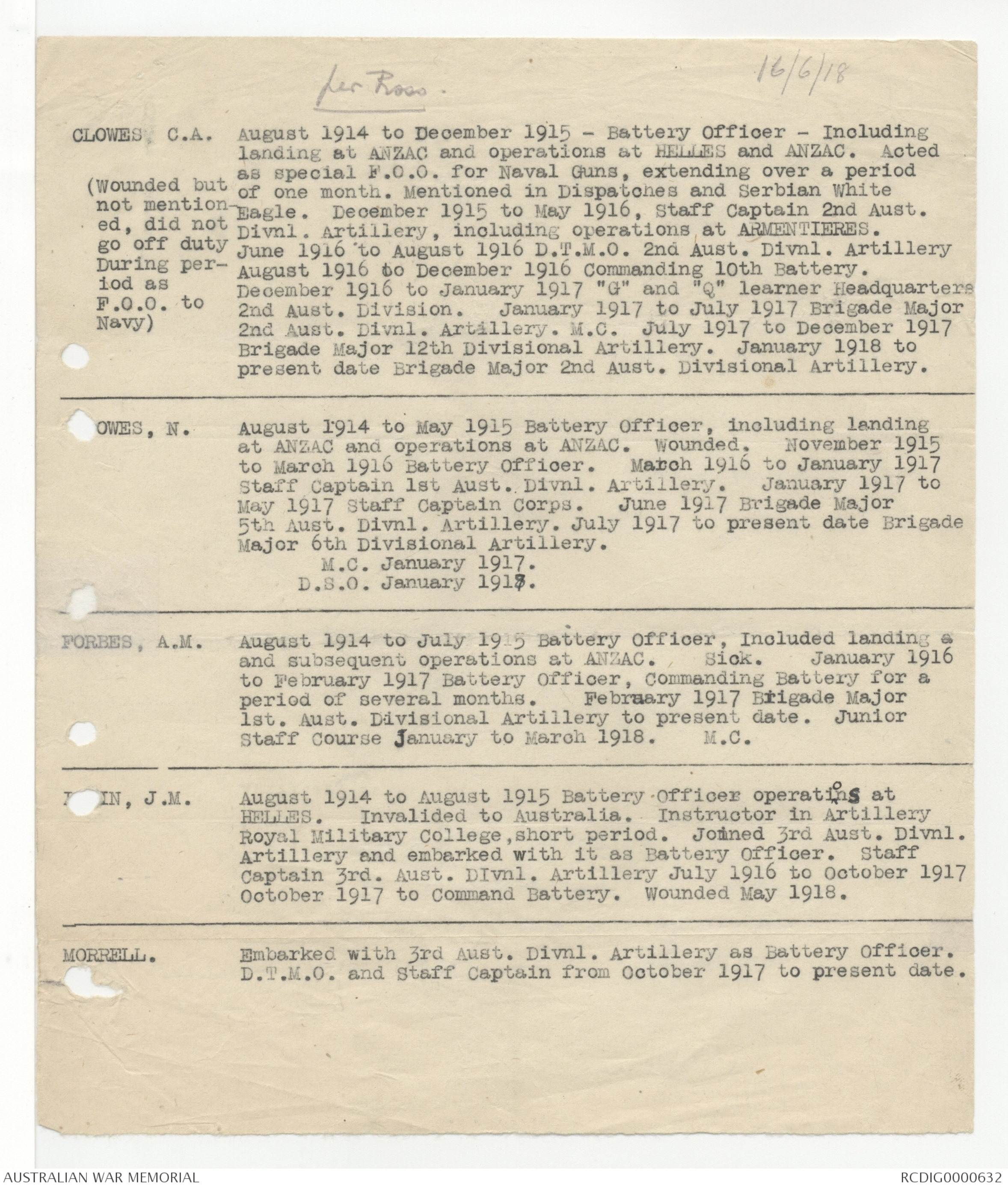
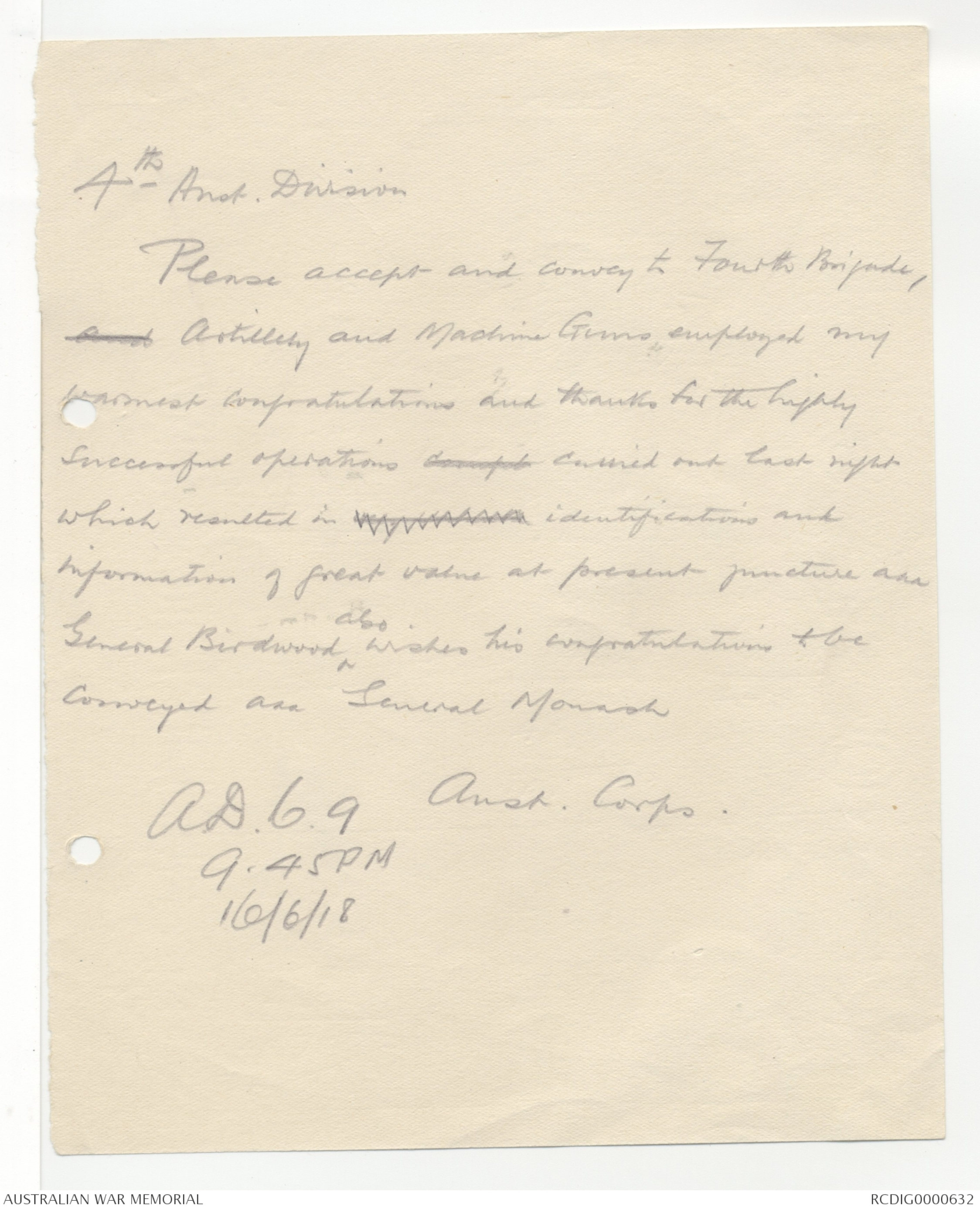
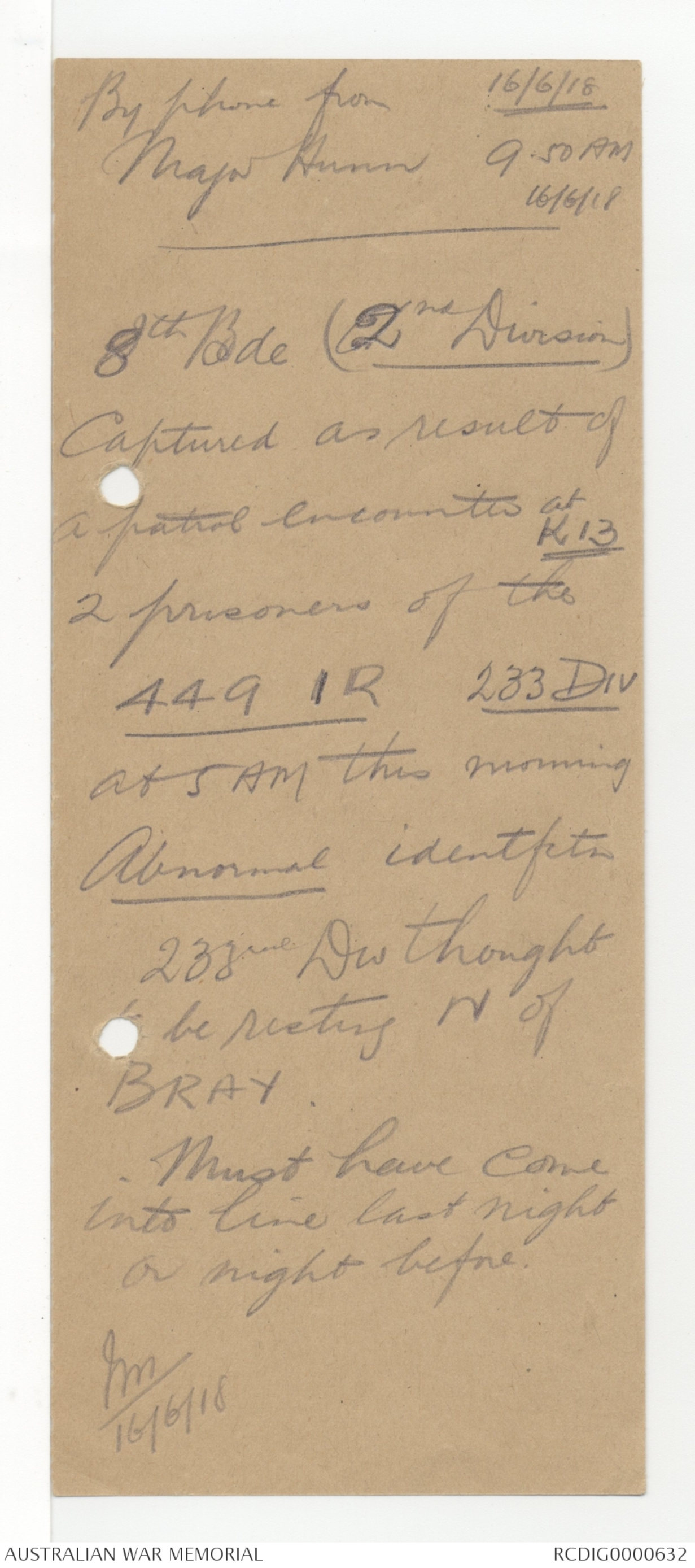
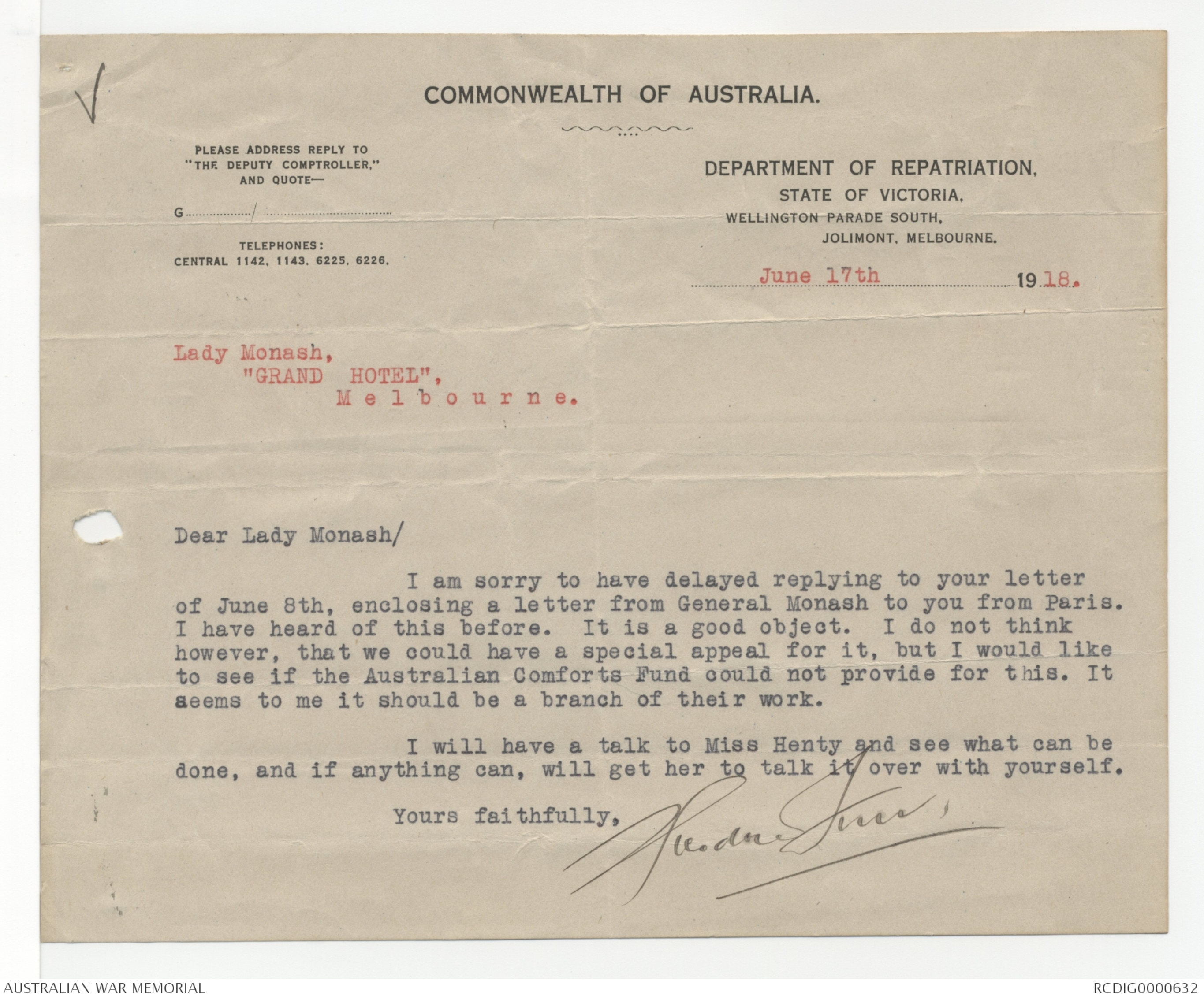
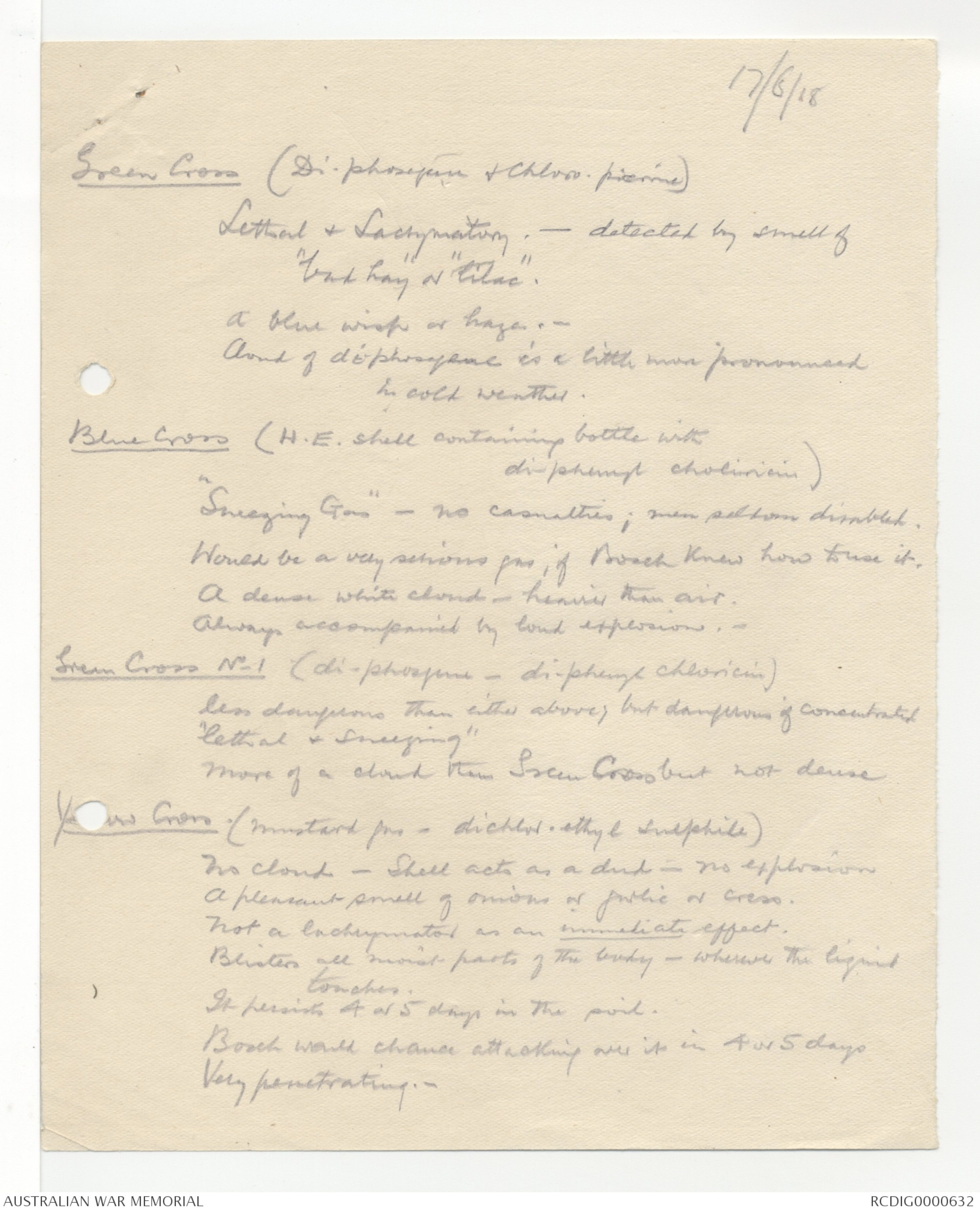
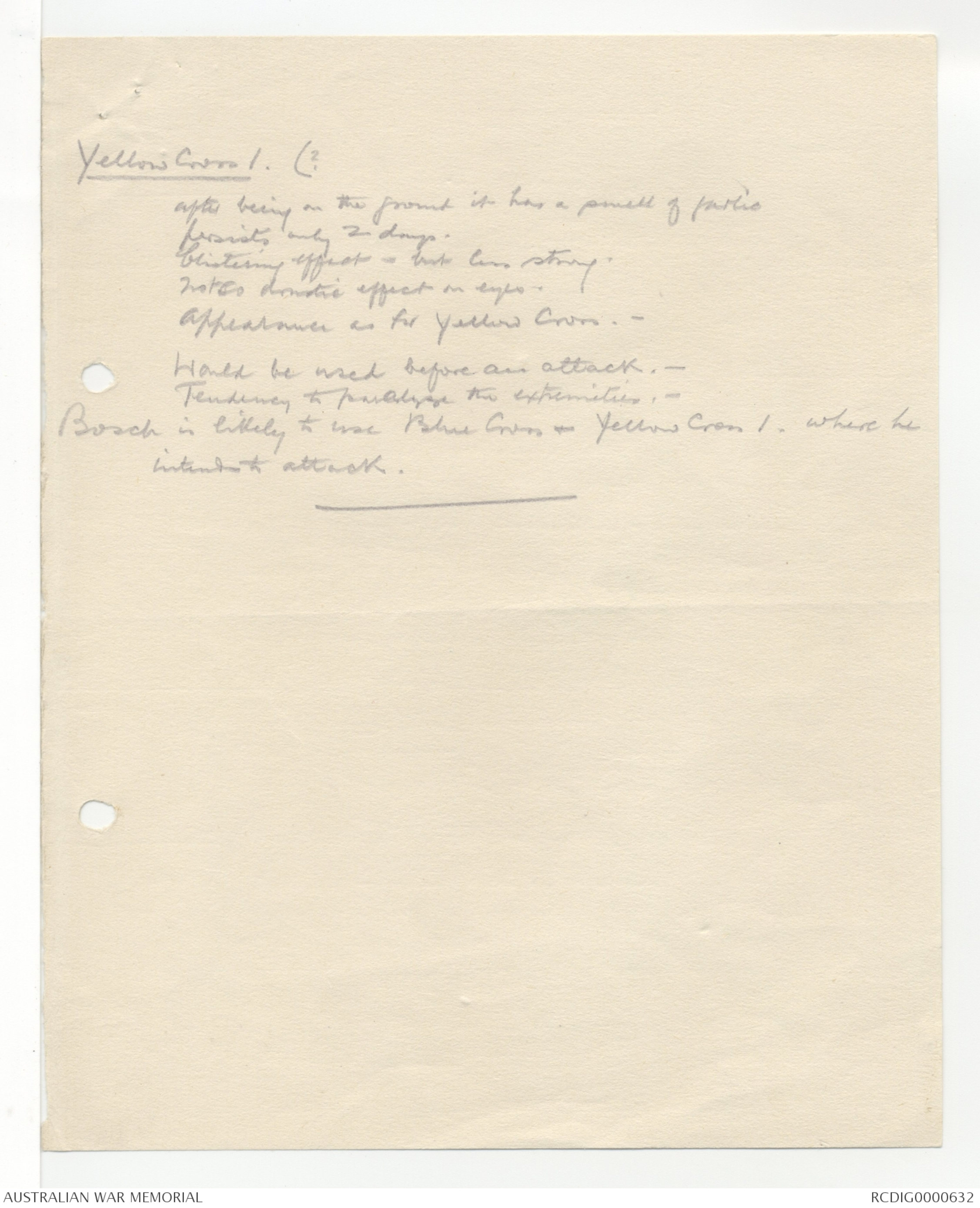
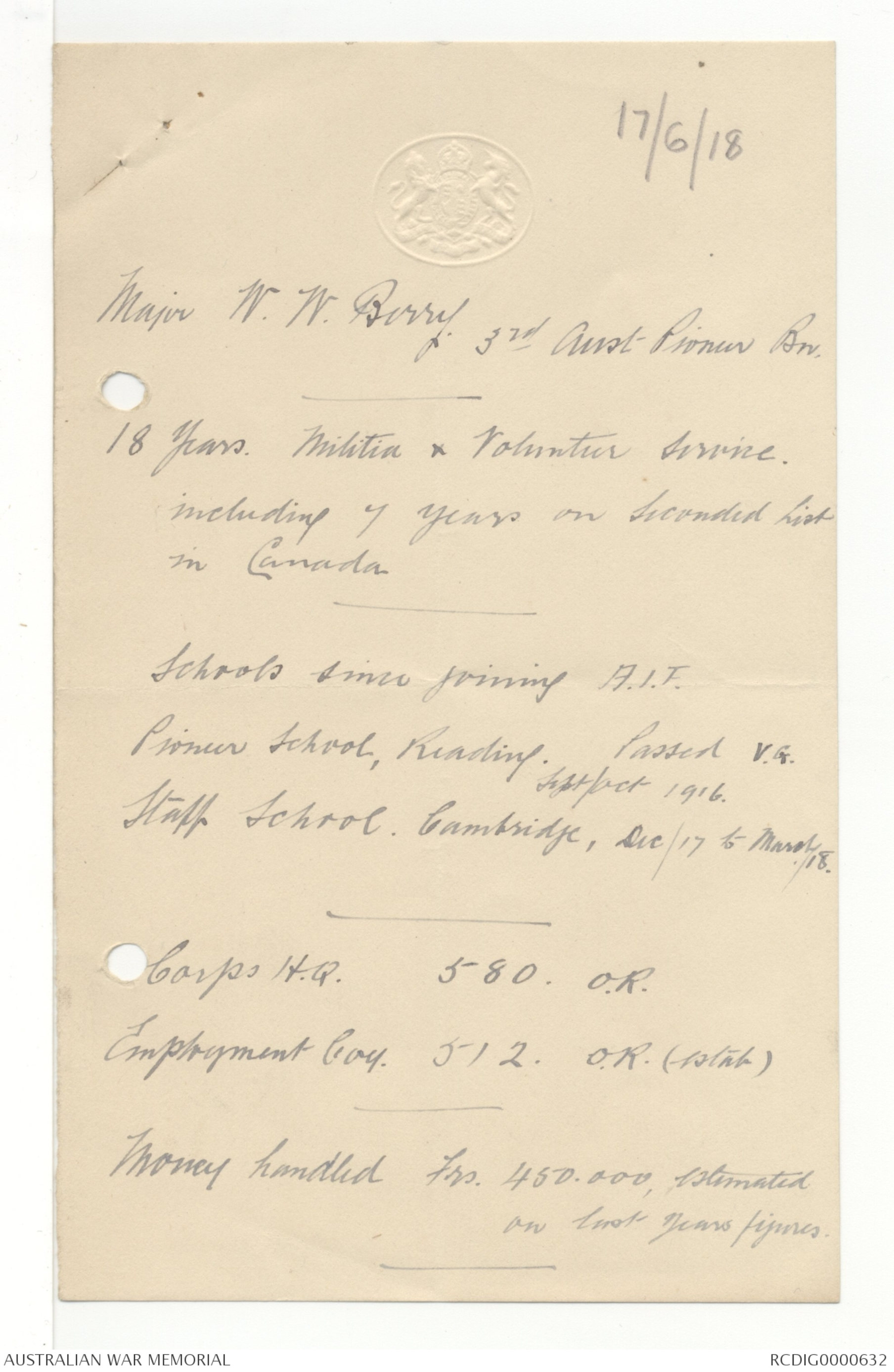
Extract from The "Weekly Depatch" June 16th 1918.
Monash: The new fighting General.
By Arthur O'Connor.
John Monash was a big engineer practising in
Melbourne when the war broke out. Also, he was a
barrister-at-law and a citizen soldier - perhaps a little
keener than the usual variety of amateur soldier, but
certainly possessing no conception of war on the grand
scale.
To-day he is Lieut-General Sir John Monash, K.C.B.,
Commanding an Australian Army Corps.
Monash made good in his civil proffession. He
became a recognised authority in more than one branch
of engineering, and supervised some of the biggest contracts
carried out in Victoria during recent years. In the heydey
of his success he conceieved the idea that a knowledge of
law would be helpful. Monash never hit on a good idea
without translating it into action. So he became a
barrister and solicitor.
When Australia "joined up", Monash's first job
was that of military censor. Soon he was on the way to Egypt
commanding one of the fine old brigades of "Dinkum Anzacs"
and he shared with them all the glories, the dangers, and
the horrors of Gallipoli.
Monash never left the peninsular until the final day of
evacuation, and his record there marked him out for
promotion. He was selected by General Birdwood to command
the Third Australian Division, then in course of formation.
Coming to Salisbury, he took in hand the organization and
training of the new recruits from Australia, and in due course
they went across to France & into the line in the Armentieres
sector. Here a fine series of raids was carried out. But the real
baptism of the Third Division came with the Battle of
Messines . Monash & his men were in the thick of the affair.
Their every objective was captured, exactly to time-table.
A distinguished British General told me that it was the
most perfect military operation he had ever seen. For 36 days
they held on to the ground won, beating off every attempt of
the enemy to recapture the precious highground.
Monash is the personification of the offensive
spirit. When the Germans first captured Villers-Bretonneux
seriously threatening Amiens, he threw in one of his xx
brigades alongside a fine English regiment, and with
unexampled dash they drove the Boche clean over the
horizon. In several of the recent daring night operations in the
line from Albert to Hangard Monash and his men have
figured gloriously.
Sir John Monash is a native-born Australian
That counts for much in the A.I.F. Some of our rabidly
imperialistic politicians would probably deny that it
makes any difference. But as one, who gets close to the soul
of the Australian soldier, one who watches daily the growth
of his national sentiment and his pride in everything
that is purely and genuinely Australian, I know that
the name of the little old town on Monash's birth certificate
is going to help the new commander from the jump.
In appearance Monash is somewhat rugged. His
broad shoulders & deep chest are surmounted by a big head,
thickly covered with tawny grey hair, brown eyes, alert yet
kindly, moderately heavy moustache, & strong mouth.
To the newspaper interviewer he is an ideal subject. He speaks
quietly, deliberately, unhesitatingly, and displays a
masterly grip of every detail in the splendid organisation
which he has created and maintained.
First & last Monash is a strong man. He is
intellectual, original, democratic - a confirmed
believer in the system of promotion from the ranks - & his
he is a born organizer. Though pleasant socially, he is
no seeker after cheap popularity, and if I am any judge
of character he can be ruthless when the occasion calls
for ruthlessness.
{*16/6/18
per Ross.*]
| CLOWES, C.A. (Wounded but not mentioned, did not go off duty During period as F.O.O. to Navy) |
August 1914 to December 1915 - Battery Officer - Including landing at ANZAC and operations at HELLES and ANZAC. Acted as special F.O.O. for Naval Guns, extending over a period of one month. Mentioned in Dispatches and Serbian White Eagle. December 1915 to May 1916, Staff Captain 2nd Aust. Divnl. Artillery, including operations, at ARMENTIERES. June 1916 to August 1916 D.T.M.O. 2nd Aust. Divnl. Artillery August 1916 to December 1916 Commanding 10th Battery. December 1916 to January 1917 "G" and "Q" learner Headquarters 2nd Aust. Division. January 1917 to July 1917 Brigade Major 2nd Aust. Divnl. Artillery. M.C. July 1917 to December 1917 Brigade Major 12th Divisional Artillery. January 1918 to present date Brigade Major 2nd Aust. Divisional Artillery. |
| [[?]]OWES, N. |
August 1914 to May 1915 Battery Officer, including landing at ANZAC and operations at ANZAC. Wounded. November 1915 to March 1916 Battery Officer. March 1916 to January 1917 Staff Captain 1st Aust. Divnl. Artillery. January 1917 to May 1917 Staff Captain Corps. June 1917 Brigade Major 5th Aust. Divnl. Artillery. July 1917 to present date Brigade Major 6th Divisional Artillery. M.C. January 1917. D.S.O. January 1918. |
| FORBES, A.M. |
August 1914 to July 1915 Battery Officer, Included landing a and subsequent operations at ANZAC. Sick. January 1916 to February 1917 Battery Officer, Commanding Battery for a period of several months. Febrauary 1917 Birigade Major 1st. Aust. Divisional Artillery to present date. Junior Staff Course January to March 1918. M.C. |
| J[[?]]IN, J.M. |
August 1914 to August 1915 Battery Officer operati^ons at HELLES. Invalided to Australia. Instructor in Artillery Royal Military College, short period. Joined 3rd Aust. Divnl. Artillery and embarked with it as Battery Officer. Staff Captain 3rd. Aust. DIvnl. Artillery July 1916 to October 1917 October 1917 to Command Battery. Wounded May 1918. |
| MORRELL. |
Embarked with 3rd Aust. Divnl. Artillery as Battery Officer. D.T.M.O. and Staff Captain from October 1917 to present date. |
4th Aust. Division
Please accept and convey to Fourth Brigade,and Artillery and Machine Guns employed my
warmest congratulations and thanks for the highly
successful operations compl carried out last night
which resulted in xxxxxxxx identifications and
information of great value at present juncture and
General Birdwood ^also wishes his congratulations to be
conveyed aaa General Monash
Aust. Corps.
A.D.C.9
9.45 PM
16/6/18
16/6/18
By phone from
Major Hunn
9.50 AM
16/6/18
8th Bde (2nd Division)
Captured as result of
a patrol encounter at K13
2 prisoners of
449 IR 233 DIV
at 5 AM this morning
Abnormal identfitn
233rd Div thought
to be resting W of
BRAY.
Must have come
into line last night
or night before.
JM
16/6/18
COMMONWEALTH OF AUSTRALIA.
PLEASE ADDRESS REPLY T0
"THE DEPUTY COMPTROLLER,"
DEPARTMENT OF REPATRIATION.
AND QUOTE-
G............................
TELEPHONES:
CENTRAL 1142, 1143, 6225, 6226.
DEPARTMENT OF REPATRIATION,
STATE OF VICTORIA,
WELLINGTON PARADE SOUTH,
JOLIMONT, MELBOURNE.
June 17th 1918.
Lady Monash,
"GRAND HOTEL",
Melbourne.
Dear Lady Monash/
I am sorry to have delayed replying to your letter
of June 8th, enclosing a letter from General Monash to you from Paris.
I have heard of this before. It is a good object. I do not think
however, that we could have a special appeal for it, but I would like
to see if the Australian Comforts Fund could not provide for this. It
seems to me it should be a branch of their work.
I will have a talk to Miss Henty and see what can be
done, and if anything can, will get her to talk it over with yourself.
Yours faithfully.
[[?]]
17/6/18
Green Cross (Di-phosgene & chloro-picrin)
Lethal & Lachrymatory - detected by smell of
"bad hay" or "lilac".
A blue wisp or haze. -
Cloud of diphosgene is a little more pronounced
in cold weather.
Blue Cross (H.E. shell containing bottle with
diphenyl chloracine)
"Sneezing Gas" - no casualties; men seldom disabled.
Would be a very serious gas, if Bosch knew how to use it.
A dense white cloud - heavier than air.
Always accompanied by loud explosion. -
Green Cross No. 1 (di-phosgene - di-phenyl chloracine)
less dangerous than either above, but dangerous if concentrated
"lethal & sneezing"
More of a cloud than Green Cross but not dense
Yellow Cross (mustard gas - dichlor-ethyl sulphide)
No cloud - Shell acts as a dud - no explosion
A pleasant smell of onions or garlic or cress.
Not a lachrymator as an immediate effect.
Blisters all moist parts of the body - wherever the liquid
touches.
It persists 4 or 5 days in the soil.
Bosch would chance attacking over it in 4 or 5 days
Very penetrating. -
Yellow Cross 1. (?
After being on the ground it has a smell of garlic
persists only 2 days.
blistering effect & but less strong.
Notes drastic effect on eyes.
Appearance as for Yellow Cross. -
Would be used before an attack. -
Tendency to paralyse the extremities. -
Bosch is likely to use Blue Cross - Yellow Cross 1. where he
intends to attack.
17/6/18
Embossed Seal - see original document
Major W.W. Berry.
3rd Aust Pioneer Bn.
18 years. Militia & Volunteer Service.
including 7 years on Seconded List
in Canada
Schools since joining A.I.F.
Pioneer School, Reading. Passed V.G.
Sept/Oct 1916.
Staff School. Cambridge, Dec/17 to March/18.
Corps H.Q. 580. O.R.
Employment Coy. 512. O.R. (estab)
Money handled Frs. 450.000, estimated
on last years figures.
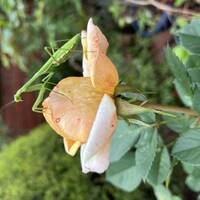 Daphne
DaphneThis transcription item is now locked to you for editing. To release the lock either Save your changes or Cancel.
This lock will be automatically released after 60 minutes of inactivity.